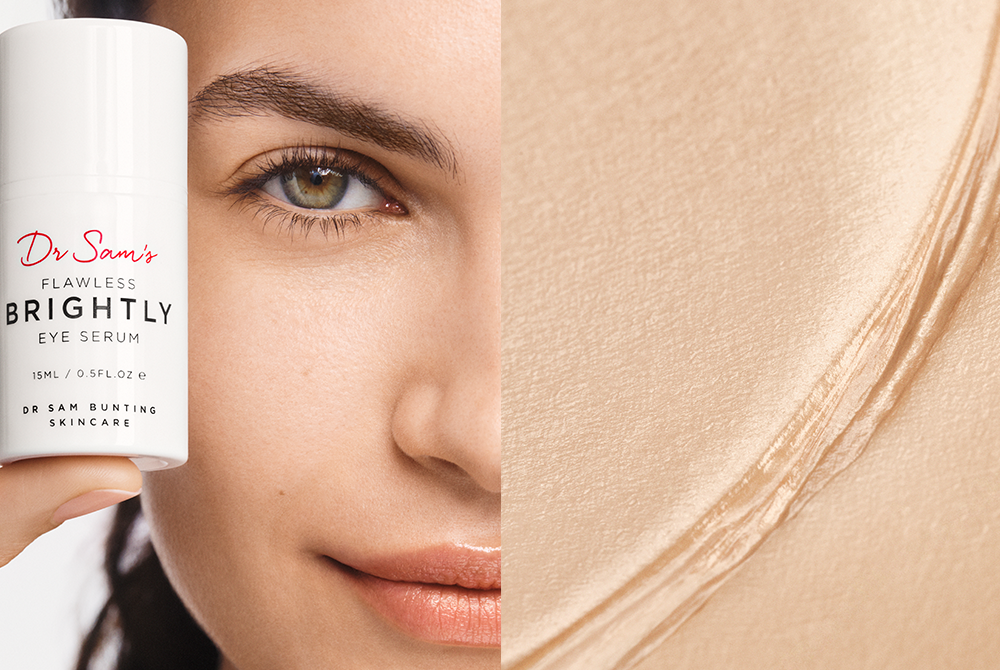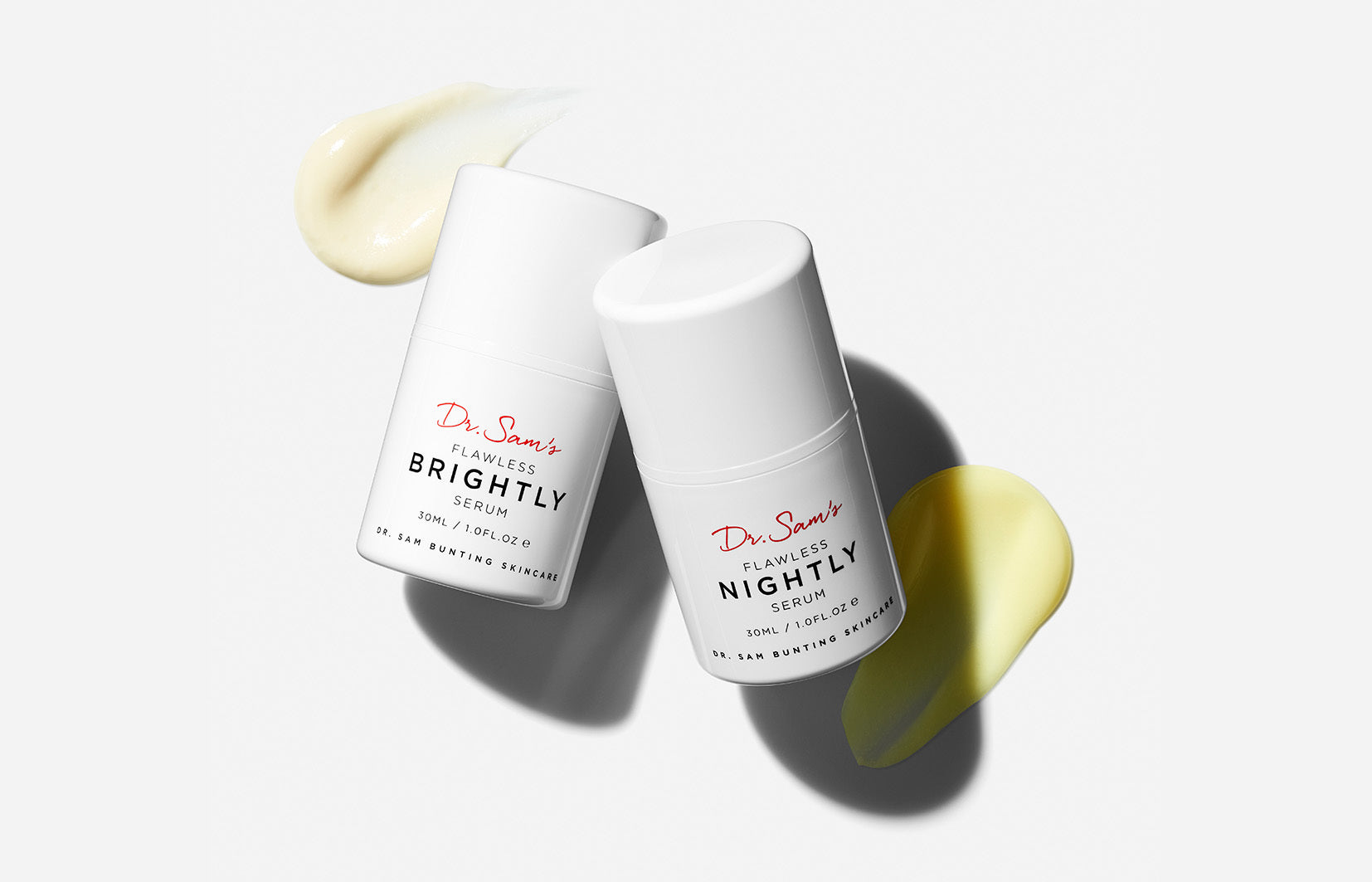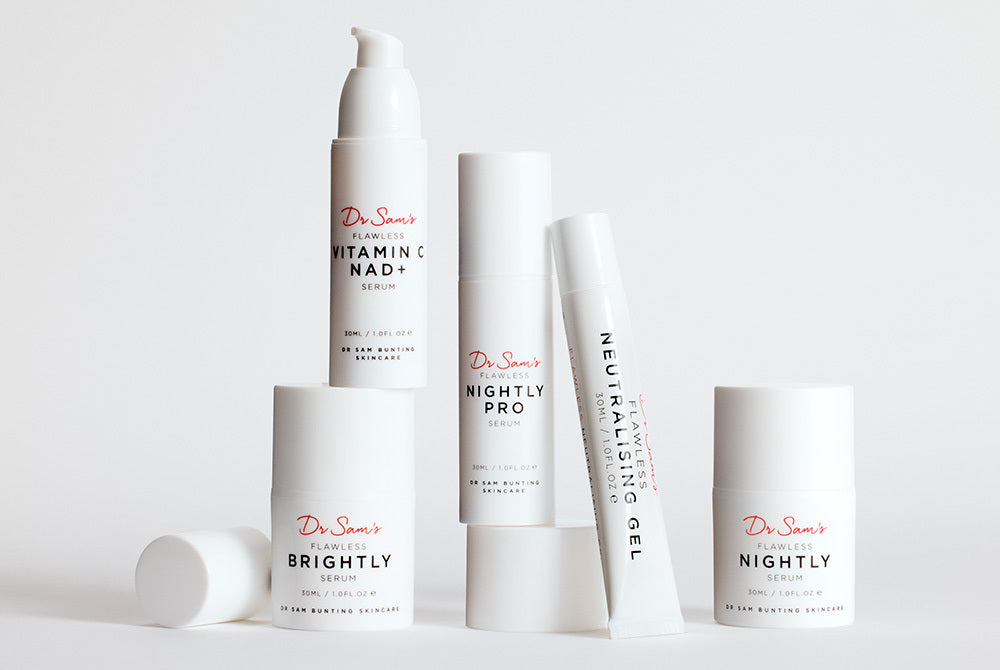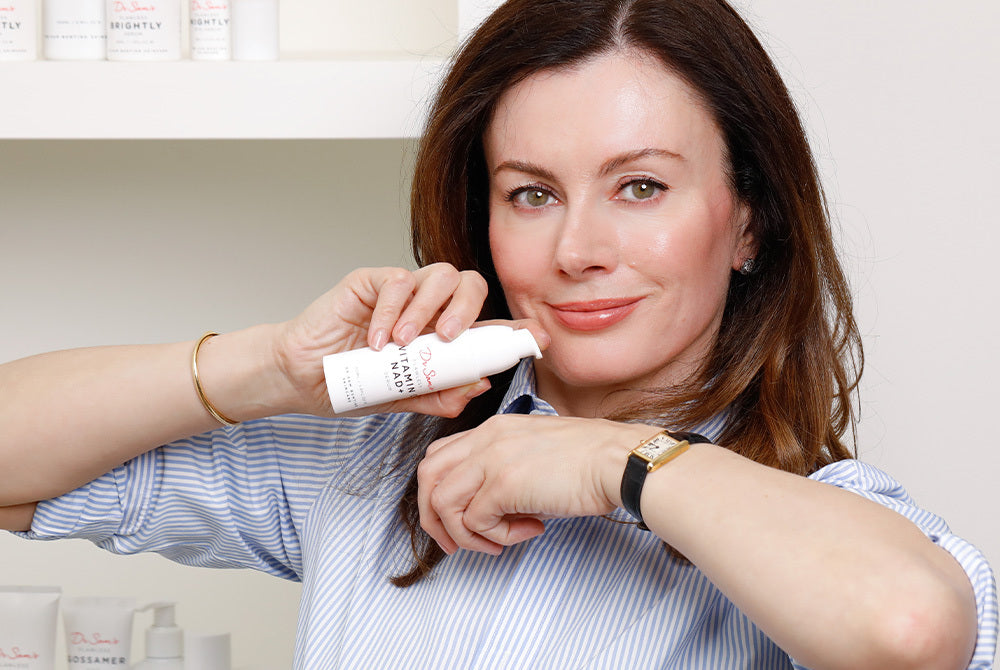I’ve seen a few patients this week who’ve not been using their azelaic acid treatment correctly.
For those of you who are new to azelaic acid, it’s a dicarboxylic acid that has a host of benefits and is useful for everything from acne to rosacea, perioral dermatitis to hyperpigmentation. In fact, I’d be hard pushed to meet someone who wouldn’t benefit from azelaic acid in some way in their routine.
I thought it would be helpful to explore the reasons behind some of these azelaic acid fails and how to go about putting them right.
Sometimes, it’s a frequency thing.
If you’re not using it every day, that’s a reason to fail right there - this is because of how azelaic acid works. Just like retinoids, a daily and consistent habit is the key to unlocking azelaic acid gold.
And other times, it’s an application thing.
If you’re not using it all over, you’ll definitely be under-delivering on benefits. I see a lot of people using it as a targeted treatment on their blemishes. Azelaic acid is actually best when used to treat the whole field, rather than on a spot-by-spot basis.
You might even be putting it in the wrong places.
Azelaic acid does a host of things but, crucially, this is not a treatment for wrinkles, nor do I recommend it around the eye area. Azelaic acid doesn't affect collagen production so you’re not going to see fewer fine lines. For this reason, I don’t recommend it for fine lines on delicate areas like the periorbital skin or the neck. Try a retinoid instead.
You’ve not reassessed the rest of your routine after starting it.
This is something I don’t see anyone talking about but it's actually a very exciting feature of azelaic acid. By downregulating the innate immune system in the skin, you might well find your skin is more tolerant and less sensitive after you’ve used it for a while. So that retinoid you couldn’t tolerate before might just be fine after a few months of azelaic acid.
How to step up your azelaic acid game
Firstly, let’s start to increase the frequency - this is great once a day, and might even be better twice a day for those of you with sensitive skin. Give it your undivided focus if skin is sensitive and then build your routine from there. You can also look to build up the strength - start at 5% and explore increasing up to 20% or until you get your desired results.
Next, pay attention to your application technique - this is definitely the best way to see increased radiance. Use the #13DotTechnique to ensure an even layer without “hot spots” of over-use.
If you’re looking to target signs of ageing around the eyes such as Flawless Nightly Eye, try a retinoid, vitamin C, niacinamide or bakuchiol. Skip azelaic acid as it's unhelpful here.
Even if you’ve had issues using retinoids in the past, consider retrying them after you’ve been on azelaic acid a while. You might well be pleasantly surprised at how receptive your skin is after 3 or 6 months of azelaic acid.
Ultimately, there’s a lot of nuance to azelaic acid’s benefits - it's an active I can’t stop talking about because there’s so much to it! But I think there’s benefits for almost everyone so I hope that today’s video helps you see the ways it can be used to help you with your skin.
When it comes to active ingredients in skincare, people often navigate to acids first for a little extra “oomph”. While glycolic and lactic acid get a lot of attention, there’s a lesser-known acid that is truly the secret underdog of skin success.
Enter my acid with extra…azelaic acid! It’s a trusted ingredient in my toolkit for its versatility and effectiveness while being suitable for anyone prone to redness, pigmentation or acne - which is pretty much most of us! Let’s deep-dive into one of my favourite ingredients and explore why you should build it into your routine.
When it comes to active ingredients in skincare, people often navigate to acids first for a little extra “oomph”. While glycolic and lactic acid get a lot of attention, there’s a lesser-known acid that is truly the secret underdog of skin success.
Enter my acid with extra…azelaic acid! It’s a trusted ingredient in my toolkit for its versatility and effectiveness while being suitable for anyone prone to redness, pigmentation or acne - which is pretty much most of us! Let’s deep-dive into one of my favourite ingredients and explore why you should build it into your routine.
What is azelaic acid?
Azelaic acid belongs to a class of ingredients called dicarboxylic acids. Naturally occurring, we find it in wheat, rye and barley as well as within our own skin’s microbiome. I find that when a molecule is naturally present on our skin, more often than not, it has the ability to do lots of helpful things in the skin - just like retinoids!
Who should try azelaic acid?
In my clinical practice, it’s relatively rare to meet someone who won’t benefit from it, it’s so versatile. It also plays well with other ingredients so it fits into most skincare routines. One of the things I really love about it is that it can often mean not having to rely on topical antibiotics - this is very advantageous in the treatment of inflammatory skin issues where overuse of antibiotics may lead to antibiotic resistance.
How to choose an azelaic acid
When choosing a formula to try, I recommend that you know the percentage of azelaic acid in the product you’re using and build up to your limit gradually - products range from 5 per cent and go up to 20 per cent (on prescription). Treat it like a ladder - start on a low rung and work your way up.
Who should skip azelaic acid?
In reality, very few people struggle with azelaic acid. Perhaps that’s not surprising given that its first line treatment for rosacea, an inherently fiery condition. Occasionally, someone with sensitive skin will find azelaic acid hard to tolerate but it’s rare. For those with very sensitive skin, layering it over moisturiser (rather than applying directly to cleansed skin) can really improve tolerability in the early stages. Tolerance increases typically with use, as azelaic acid makes skin less reactive.
Is azelaic acid good for treating rosacea?
Yes! It’s brilliant for redness and rosacea-prone skin. It reduces the activity mediated by Toll-like receptors, which are essentially danger detectors that sense our environment for threats, helping activate our skin’s defenses. In redness-prone skin these sensors are turned up too high and Azelaic Acid helps bring them back under control.
How long does it take for azelaic acid to reduce redness?
Things should start to improve after a few weeks and continue to get better for up to a further 3-6 months. In practice, I find that azelaic acid is the one ingredient that can actually really help change the course of rosacea over time. Many people will find that their skin becomes more tolerant of other active ingredients, like retinoids, after a period of use.
What are the benefits of azelaic acid?
Azelaic acid is an incredibly versatile and effective ingredient for tackling multiple concerns such as acne, rosacea and pigmentation:
- Reduces inflammation: Azelaic acid soothes irritation and helps to improve redness caused by inflammation in rosacea.
- Fights acne: It has antibacterial properties which helps to treat current breakouts and prevent further bouts of acne, too. It’s why I included it in my blemish-busting Flawless Neutralising Gel
- Unclogs pores: it normalises keratinization, which keeps pores clear and helps eliminate blackheads.
- Gently exfoliates: It helps remove unsightly dead skin cells that can cause our skin to look matte.
- Evens skin tone: It inhibits tyrosinase, which is an enzyme that leads to excess melanin and hyperpigmentation. It's effective on post-inflammatory hyperpigmentation from acne breakouts, sunspots from UV damage and even melasma.
- A powerful antioxidant: it maintains our skin's long-term health, helping to prevent free radical damage.

Is azelaic acid safe to use in pregnancy?
Azelaic acid is safe for use within pregnancy and lactation: azelaic acid is one of the few treatment options for acne, rosacea, congestion, or pigmentation that is generally safe for pregnant women.
How to use azelaic acid?
In most instances, azelaic acid should be used all over the skin as not only will it help improve areas of concern, it can provide antioxidant protection, brighten skin tone and improve skin texture. With active ingredients, using more product doesn’t equal a better result so start slow!
My morning recommendation would be to start with Flawless Brightly Serum, begin with half a fingertip of product and build up gradually to a full fingertip, providing you don’t have any irritation. As always with skincare, an even distribution is key so I’d recommend using the 13 Dot Technique™ application method - you’ll be pleasantly surprised how a small amount of product goes a long way.
It’s safe to be used twice a day but if you have sensitive skin, always be cautious and build azelaic acid into your skin slowly by using it every other day.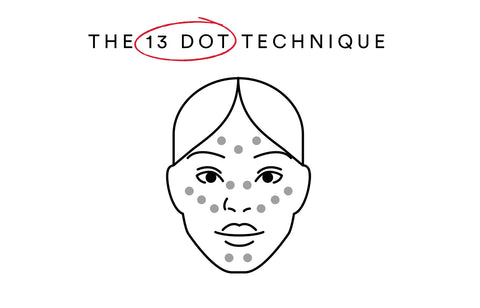
I often find anecdotally that patients are able to use their retinoid more easily once they’ve used azelaic acid for a while. For evening I’ve combined azelaic acid with gentle but effective 2% Granactive Retinoid in my powerful Flawless Nightly 2% Retinoid Serum which pairs perfectly with the morning serum, incorporating this 2-3 times a week at night.
What ingredient does azelaic acid work well with?
Thanks to its versatility, azelaic acid is a team player and pairs well with other active ingredients. For the daytime, azelaic acid works very well with Vitamin C and niacinamide which can be combined (with SPF) for a stellar morning routine. This trio all exhibit antioxidant properties which protect the skin from free radicals - find them in our best-selling Flawless Brightly Serum, our daytime warrior for complexion brilliance.
Azelaic acid is central to my clinical work - it forms the backbone of maintenance acne regimes and is widely useful when tackling sensitive skin concerns, including rosacea and perioral dermatitis. We can extrapolate from this why it’s so helpful even in those with mild skin issues and it’s a true pleasure to see access to this helpful ingredient increase in over-the-counter products.
Ultimately, when one ingredient is able to treat multiple concerns, it allows you to use fewer products - this makes being consistent with your routine even easier and leads to long-term results that are sustainable.
What not to do with azelaic acid
There are some actives that you can drop into your routine as and when needed - azelaic acid is not one of them. Like retinol, you will benefit the most from azelaic acid when you’re using it diligently. That means daily. Sporadic use just won’t work when it comes to managing those common issues it helps with, like clogged pores, redness and pigmentation.
Purging and azelaic acid
If you suffer from acne and start to break out a bit more when you start your azelaic acid journey, there’s no need to panic. You might well be experiencing purging. Any active that alters the dynamics of how skin cells attach to one another inside the pore can cause purging - think of it like the ache in your calves after 2 weeks training for a marathon. It’s necessary discomfort to get through. Keep going!
If its really bothersome you can always drop the frequency down, but try not to stop. Those congested pores needed to get cleared out eventually, so you’re doing good work for the long term.
What not to pair with azelaic acid
The good news is that azelaic acid pairs surprisingly well with lots of ingredients - but at the beginning, there are quite a few ingredients or product categories that you should temporarily stop or at the very least, be mindful of, whilst you’re bringing it onboard, unless its been intentionally formulated with them.
If you suffer from acne and use Benzoyl Peroxide for new spots, you’ll definitely want to divide and conquer - so be sure to split these out and use Azelaic Acid and Benzoyl Peroxide at separate times of the day to avoid unnecessary redness and irritation.
I feel similarly about strong alpha hydroxy acids - their benefits overlap a bit with azelaic acid, but since I think it has more to offer, I suggest withholding them in the short-term.
As far as physical exfoliants go, and I include cleansing brushes here, I’d eliminate them altogether. We can improve texture in increasingly sophisticated ways with more multi-purpose ingredients.
Care also needs to be taken with Vitamin C, beta hydroxy acids and retinoids. In some instances, these will be formulated together with careful consideration for the combined irritant potential, and that’s fine. But when using azelaic acid alone, avoid layering yourself in the early days. It can be combined with these in principle but allow tolerance to develop first. When in doubt, use them at different times of the day to your azelaic acid until you see how your skin behaves. Your routine can always evolve with time.
How does Azelaic Acid help acne?
Azelaic acid has the remarkable ability to tackle 3 out of 4 points on the acne highway.
It unclogs pores
Every blemish starts out life as a blocked pore.You’re losing skin cells all the time without noticing it, correct? Not so inside the pore in blemish-prone skin.
Skin cells have charges that mean they get attracted to each other and can create congestion, which blocks the pores. This creates a “lock-in situation” for the acne-causing bacteria to have a party unexposed to oxygen - not a good thing as they thrive in this environment! Azelaic acid helps solve this situation, so no more annoying dots on your t-zone. But it also helps stop breakouts in the future. A massive win!
Azelaic acid is also anti-inflammatory.
The consequence of the acne-triggering bacteria flourishing in the pore is inflammation. This leads to the all-too-familiar signs of a red bump that’s tender and might well have a whitehead on top of it. Or it might cause a deeper, larger lump, what we call a nodule or a cyst. Azelaic acid dials this down, making blemishes smaller quickly. The less time a blemish is inflamed, the less of a dark mark it leaves behind so this is good news.
You can’t have a party in the pore without bacteria - yep you guessed it, azelaic acid is anti-bacterial too. This is fantastic news as it's an antibiotic-free way to lower the amounts of the blemish-causing bad boys on the skin.
It helps clear pigmentation so it’s fantastic at improving your post-acne complexion. We know that those dark marks that are kind of the footprint of your blemishes are almost as annoying as the blemishes themselves - and they really tend to linger in those with very inflammatory acne and those with more melanated skin. So tackling this early on is an important strategy for skin success.
Is azelaic acid the best acid for hyperpigmentation?
Azelaic acid is, hands down, the best one for pigmentation in my book - I think of it as only second to hydroquinone in terms of potency. That’s because it acts inside the cells - this is a very important characteristic of our most potent actives.
How does azelaic acid help hyperpigmentation?
It inhibits tyrosinase - that means it slows down the activity of the rate-limiting enzyme that uses tyrosine to produce melanin, the pigment that makes skin tan as it tries to defend itself against harmful UV rays which can otherwise damage our cell’s DNA.
It also suppresses DNA synthesis in melanocytes so it targets the abnormally excitable melanocytes preferentially making them less prone to dropping pigment in response to UV and friction.
Its an antioxidant - we know that free radicals, also triggered by sun exposure and pollution, drive the pigmentation pathway, so fewer free radicals means younger looking, more even toned skin.
Is azelaic acid better than retinol for hyperpigmentation?
I think it is - that’s because it attacks the pigmentation pathway at multiple points, including at source, at the DNA level of overactive melanocytes. However their mechanism of action is extremely complimentary so retinol and azelaic acid work brilliantly together.
How long does it take for azelaic acid to fade hyperpigmentation?
You should expect to see some improvement quite quickly - in 6 weeks or so, things should start to look better. But for clearance of pigmentation, you may well be looking at 6 months +, for issues like post-inflammatory hyperpigmentation in acne in those with melanated skin.
Patience is required and a twice daily dosing regime will be most effective. It’s also critically important to use broad spectrum sunscreen that protects against long wave UVA1 but also visible light. Look for tinted sunscreens with Iron Oxides or multiple antioxidants to help achieve this.



